A Note from Dr. Guenter Bischof: The University of New Orleans (UNO) and The National WWII Museum:
It is often forgotten that the University of New Orleans and its History Department happened to be the originator and initially the principal driving force behind the creation of The National WWII Museum in New Orleans. Distinguished UNO history professor Stephen Ambrose (a Boyd Chair in the LSU system) and his friend and history professor Nick Mueller (then Dean and Vice Chancellor of Extension) founded the Eisenhower Center (EC) in the mid-1980s. Ambrose made the EC the wellspring of his activities in the 1990s—collecting D-Day oral histories and writing his celebrated history of D-Day for the 50th anniversary in 1994, as well as organizing annual conferences on World War II and regular WWII Roundtable lectures. The first planning sessions for a “D-Day Museum” in New Orleans—as it was then called—with a distinguished group of Presidential Library/Museum directors, occurred in the confines of the EC in the spring of 1990. Ambrose and Mueller launched what was then The D-Day Museum in 2000 after 10 years of vital planning and fundraising while they still worked for UNO, with strong support from UNO chancellor Gregory O’Brien.
The idea to start a new “online series” of student papers by the Museum’s Institute for the Study of War and Democracy is welcomed by the UNO History Department as it will reinforce the old ties between these two vital New Orleans institutions. In the fall of 2020 (the “COVID Semester”), I taught a graduate seminar on “American Memory of World War II.” Expecting to bring my students to the “memory conference,” planned by the Museum’s Institute for the Study of War and Democracy for September 2020. My course planning was upstaged by the postponement of this international conference due to COVID-19. Instead, I brought the graduate students in this seminar to the Museum to see and think about the D-Day Exhibit and the memory it was aiming to spark and to listen to presentations by Dr. Mueller, the President and CEO Emeritus of the Museum, and Dr. Citino, the Executive Director of the Institute for the Study of War and Democracy and the Samuel Zemurray Stone Senior Historian. The students were asked to write as their final paper in the course an entry for a future WWII encyclopedia on “American Memory.”
This paper by Kaylie McCarthy, a student in the course, was the most pertinent to the topic and is the first paper published online in the new series by the Museum of papers by UNO students. McCarthy’s paper contains some of the theoretical concerns dealing with memory and then applies it to American memory of World War II, including film, literature, historical case studies (including Stephen Ambrose’s master narrative on D-Day), and the Museum.
— Guenter Bischof, PhD, Marshall Plan Chair of History & Director of Center Austria: The Austrian Marshall Plan Center for European Studies, UNO.
Lead Image: Propaganda posters, including this one created by the Office for Emergency Management, encouraged collective remembrance of events like the attack on Pearl Harbor to bolster American patriotism and increase enlistment. Courtesy of US National Archives.
In order to discuss memory, it is important to begin with the human repository for remembrance—the brain. It is not possible to elaborate on the complexities of individual and collective recollection without first addressing the foundational elements that form the brain’s biological capacity for processing, coding, and storing information. Although many parts of the brain are responsible for processing sensory input that informs memory, the area of the brain known as the hippocampus is the central zone of memory storage. In simplified terms, this area acts as the gateway between an individual’s conscious present and the recollection of experiences past. The biological formation of memory is further molded by social relations and interactions with the surrounding environment. However, not all moments from the conscious present are converted into retrievable memory. In regard to violent or unpleasant experiences, the brain’s organizational methods that guide memory formation and recollection may be complicated, and in some cases inaccurate. The processes of rehearsal and repetition help to demarcate which experiences are forgotten, while encoding others into long-term memory. The capacity for the brain’s ability to recollect the past is dependent on an array of factors, yet moments that do become memories tend to be coded by the experience’s associated emotions.
Beyond the biological components that serve as the foundation for consciousness and establish the underlying structure for individual recollection exists a shared human memory that connects through social and cultural ties. A significant portion of subjective memory is fundamentally situated within a framework of collective memory, and an understanding of the past is inherently contingent upon an evolving negotiation process that operates to form a group consensus. According to French philosopher Maurice Halbwachs, collective memory is a critical element to every society, acting as a cohesive link based on a shared conscious existence. In the article, “Individual Memory and Collective Memory,” Halbwachs argues that it may be virtually impossible to sort individual memory from the collective, as individual memories are intrinsically relational to the group framework. The ability for aspects of the past to enter into the collective is vital for the preservation of certain memories, which function as learning tools to better comprehend and adapt to current events and experiences.
Collective American WWII memory is heavily intertwined with American identity, often depicted in art with representations of unity and bravery. Courtesy of US National Archives.
An important aspect of collective memory, Halbwachs notes, is that individuals typically exist amidst a variety of diverse groups, with each informed by their own different collective memory. These variances in perspective thereby create unique cohort memory pools, which may account for the generational differences in collective memory and interpretations of historical events. Memory researcher Aleida Assmann notes that the dynamic quality of memory is a major contributor to the formation of cultural memory—a collective understanding of the past that is strengthened through a symbolic heritage. Moreover, in The Southern Past, historian W. Fitzhugh Brundage adds that nostalgia is the central factor that produces the concept of heritage as an in-group identity formed as a subset within the cultural collective memory.
In the case of World War II, American memory has been fundamentally shaped by the formation of a collective cultural identity. To a great degree, the very essence of American identity has been intertwined with interpretations of the past, and when the narrative of one shifts, the other also becomes subject to revision. There exists a multitude of pathways that allow for the transfer of memory from an individual mental construct into a collective basis of understanding. However, American WWII memory is defined primarily through popular culture in the form of film and literature, by professional historians and other academics, as well as through the creation and interaction with commemorative memory sites such as museums and monuments.
Depictions of WWII events in popular culture such as film and literature have long played a unique role in public memory formation. These artistic mediums are intended for broad audiences, and are often consumed by a greater segment of the population compared to scholarly works that follow traditional academic structures. Thus they are capable of influencing public memory regardless of the level of historical accuracy maintained in the portrayal of the events. In the decades after the war, fictional works such as Joseph Heller’s Catch-22 published in 1961, and Kurt Vonnegut’s Slaughterhouse-Five published in 1969, entered into the postwar body of American literature. The controversial sentiments contained in the two novels were greatly influenced by the personal wartime experiences of Heller and Vonnegut. Although Catch-22 and Slaughterhouse-Five are both works of fiction, the novels reflect the authors’ own memories of World War II, and present a jaded view of the American involvement in the war that characterizes the narrative of American exceptionalism as absurd and oftentimes blatantly hypocritical. Despite the critical perspective of Heller and Vonnegut, the novels have continued to maintain notable popularity since their publication, and in 2010 both were placed on Time’s ALL-TIME 100 Novels list, thus indicating that Slaughterhouse-Five and Catch-22 have been guaranteed a place in American popular culture and memory.
US Army portrait of Pvt. Kurt Vonnegut, Jr. Vonnegut wove aspects of his own wartime experience throughout his fictional novel, Slaughterhouse-Five.
Along a similar vein to popular literature, film has also had a significant impact on American memory of World War II. Film’s unparalleled ability to portray highly realistic renderings of historical events furthers the medium’s success as a consumable memory product. American movies about World War II serve as informative markers of postwar memory, often revealing the prevailing narrative at the time of the film’s release. Furthermore, a unique characteristic of film is the medium’s potential to form a reciprocal path in the influence of memory, whereby the films themselves are informed by the memory of real historical events, yet the film’s portrayal of the events also tends to enter into public memory.
Hollywood’s fixation with adding movies that have plots revolving around WWII events to the growing historical-fiction genre demonstrates American society’s desire to capture wartime memory, as well as a desire from audiences to vicariously “experience” the war. Contained to a reasonable length of time, films can only present a highly fragmented account, designed to achieve optimal entertainment while supplying the necessary material to satisfy the anticipated range of emotional responses. Among the numerous American films based on WWII events, The Longest Day and Saving Private Ryan are two well-known examples. Generational differences in WWII memory are revealed through the films’ contrasting postwar memory narrative.
Released in 1962, The Longest Day depicts the events surrounding the invasion of Normandy. The movie takes on a documentary-like tone, presenting the war from multiple angles. However, an emphasis is placed on the role of the Allied commanding officers as fearless leaders protecting their men in a just fight aimed at defeating a totalitarian power. The movie does not offer an in-depth perspective on the experience of the lower ranking soldiers, and repeatedly sanitizes the portrayal of violence. The focus of The Longest Day is not on the emotional and psychological pain and suffering of those involved, but is instead meant to illustrate the success of the Allied forces’ immense coordination efforts that went into the planning and execution of the operation.
John Wayne (center) from the movie The Longest Day. Courtesy of 20th Century Fox.
The 1998 film Saving Private Ryan also concentrates on the events of D-Day, but in contrast to The Longest Day, the film relies heavily on the powerful emotions that arise from being faced with the violent reality of war. Saving Private Ryan does not simplify combat, but rather indulges in an analysis of the complex, and often ambiguous emotional, psychological and moral elements that comprise the WWII experience, underscoring the brutal conditions that many soldiers faced, resulting in psychological issues such as post-traumatic stress disorder (PTSD). Notably, the film’s intense representation of the storming of Omaha aligns with oral history interviews from WWII veterans who had been present. In an article for the American Historical Association’s online newsmagazine Perspectives on History, entitled, “Translating War: The Combat Film Genre and Saving Private Ryan,” film historian Jeanine Basinger praises the film’s depictions of wartime violence, saying, “What Saving Private Ryan does is take the carnage out of space and back down to the human level. Spielberg has asked us to think about it and ask ourselves where we are going in the future of this country.”
Taking a contrasting position, historian John Bodnar argues in the article “Saving Private Ryan and Postwar Memory in America,” that, despite the efforts of director Steven Spielberg to present a historically accurate depiction of D-Day, the movie is selective in the aspects it highlights, thus playing into an ethnocentric narrative that perpetuates the idea of American exceptionalism. Saving Private Ryan contextualizes the American soldiers’ acts of violence as being within the boundaries of moral behavior. Bodnar claims that Spielberg’s depiction of World War II is highly nationalistic, calling for a renewed reverence for the veterans who had served, and demanding unquestioning support of the American participation in the war. Furthermore, in the article Bodnar suggests that both The Longest Day and Saving Private Ryan present skewed representations of the events of D-Day, with the two films offering biased narratives that overly accentuate American ideals of bravery, power, and heroism. According to Bodnar, pop culture cinema’s emphasis on patriotic individualism instead of the Allies’ collective fight for democratic community reveals significant insight into American postwar memory.
Since the war, professional historians and other academic researchers have continued to be among the main contributors to the scholarship on World War II, in many cases also serving as consultants for pop culture films, video games, exhibits and displays, and non-academic books; therefore, holding significant influence over American WWII memory. Often, professional scholars obtain a level of respect within American society due to the dedication and time involved in the academic pursuit, as well as the expertise required for the obtainment of an advanced degree. Due to the authority granted to the expert historical analysis from said academics, scholarly interpretations of WWII events should not be understated in the discussion of American WWII memory.
Comprehensive textbooks concentrated on presenting a thorough analysis of the events of World War II, often compiled from essays of numerous historians and researchers, are a mainstay for American students of history. Works such as For the Common Defense: A Military History of the United States from 1607 to 2012 by historians Allan Millett, Peter Maslowski, and William B. Feis, feature prominently in syllabi, serving as essential texts for classes on military history. Books like For the Common Defense operate as efficient resources for learning fundamental WWII knowledge, and in some instances, may be a student’s first encounter with the material, consequently becoming the individual’s basis for interacting with other forms of WWII memory. Moreover, because such works have the potential to mold students’ understanding of World War II, the texts enter into the collective “memory” of American students.
Distinctive methods and approaches for interpreting history used by different historians has also shaped the broader memory formation of World War II. For example, Studs Terkel’s “The Good War:” An Oral History of World War II challenged the traditional historical narrative’s top-down approach that tended to only focus on an analysis of the war’s leaders and commanding officers. Instead, Terkel opted for a bottom-up interpretation that emphasized the role of the lesser-known participants who carried out the critical tasks and provided wartime support. Based on numerous oral history interviews with WWII veterans conducted by Terkel himself, The Good War, published in 1984, was instrumental in bringing the voices and experiences of the veterans to the forefront of WWII discussions. Therefore, due to Terkel’s extensive attention to the interviews with veterans, the book’s entire premise was based on memory. Reciprocally, the memories detailed in The Good War infiltrated the broader American collective memory, placing greater consideration on the experiences and stories of the numerous soldiers who had served.
In a similar way to Terkel, historian Stephen E. Ambrose integrated the memories of veterans into his research on World War II. The foundation of Ambrose’s D-Day: June 6, 1944: The Climactic Battle of World War II lies in the approximately 1,400 individual oral histories from WWII veterans that Ambrose collected in the decades prior to writing the book. Differing from Terkel’s rather diverse assortment of interviews, Ambrose gives special attention throughout D-Day to the role of the American forces, and how American ideals (the fight for democracy, dedication and loyalty to country, courage, etc.) were instrumental to the resulting Allied victory. D-Day reveals a moderate level of selection-bias due to Ambrose’s choice of including only snippets from the oral history interviews to better support his own claims and to further the patriotic perspective of American involvement in World War II. In response to Ambrose’s nationalistic interpretation of the United States participation in World War II, historian Michael C.C. Adams argued that Ambrose’s excessive selectivity negated any semblance of impartiality in the discussion of historical events, elevating the role of Americans to a near mythical status.
Stephen Ambrose’s collection of oral history interviews helped to lay the foundations for what would later become The National WWII Museum. Photo courtesy of the author.
However, Ambrose’s ability to form a historical analysis that is accessible to the public has been a central reason for his success outside the world of purely academic literature. The writing and structure of D-Day appeals to academic historians and non-academics alike. Ambrose largely foregoes extensive use of military terminology that would require specific knowledge of the subject, and the book presents the historical actors and events within the broader historical context, allowing readers to engage with the material without necessitating consultation with external resources.
The interviews contained in The Good War and D-Day offer perspectives from the veterans who were involved, making both books valuable assets in the preservation of WWII memory. Despite some critical reviews, the importance of the two books will likely grow as those with first-hand experience of the war pass on, and new generations are left to learn of the war’s significance through the oral history accounts. Ambrose’s and Terkel’s works function as memory time capsules, not only of the events of World War II, but of the two historians themselves. Taking this into account, readers can gain perspective on the shaping of memory and American identity, and the role that academics like Studs Terkel and Stephen Ambrose may have played in both.
Lastly, American WWII memory is influenced by what historian Pierre Nora would refer to as, lieux de mémoire—memory sites. Although Nora’s definition of memory sites is quite broad, limiting the discussion to only physical spaces of commemoration—such as museums and monuments—still presents an important analysis on American memory formation. According to Nora, memory sites are classified by the intention of remembrance, and maintain material, symbolic, and/or functional value. Furthermore, Nora distinguishes memory sites seeking to recreate the experience of the initial memory event as history, as opposed to real memory. One of the central purposes of the historically framed memory sites is to preserve the past, due to anxiety within a society over the possibility of losing parts of a shared collective memory.
The National WWII Museum, like other museums that focus on historical events or topics, is what Pierre Nora would call an artificial lieux de mémoire (memory site), the result of the modern shift from memory to history. It functions not as a site of real memory, but as a depiction of history, existing somewhere in-between memory and history with the purpose of organizing the past in a cohesive manner for those in the present. The Museum is shaped by the intended audience: primarily post-WWII generations that have no first-hand experience of the war and international patrons who are interested in learning about the American WWII experience. Holding true to its mission statement, a significant portion of the Museum focuses on the perspective of the soldiers themselves. Oral histories are located throughout the galleries, and many of the information placards feature quotes from soldiers, brief snippets that reveal their own personal experiences during the invasion. Ultimately, the Museum’s central aim is to provide an account of World War II through public history methods from the American perspective, emphasizing the heroism of the American troops and the exceptional leadership demonstrated through the war. The National WWII Museum serves as a major repository for pieces of real American WWII memory (the artifacts and personal objects of veterans), but also serves as a site of memory formation for the numerous patrons and tourists who visit and learn from the Museum’s exhibit offerings.
The National WWII Museum serves as an integral site of American WWII memory, with oral histories and memories from veterans featured prominently throughout the exhibits, including on this placard in the D-Day exhibit. Photo courtesy of the author.
Although memory formation originates in the brain’s biological processes, external factors influence the final interpretation and comprehension that determines the final formed recollection. Collective memory, based on social relationships and interactions, informs both individual and group identity, and perspective of the past and present. The national collective of American WWII memory has been shaped by multiple factors: representation in popular culture formats like film and literature, academic historical interpretation, and curated memory sites that work to reaffirm particular narratives. Ultimately, American memory regarding the events of World War II continues to evolve depending on the dominant narrative that forms due to differences in generational interests, changes within international diplomatic relations, and new academic interpretations.
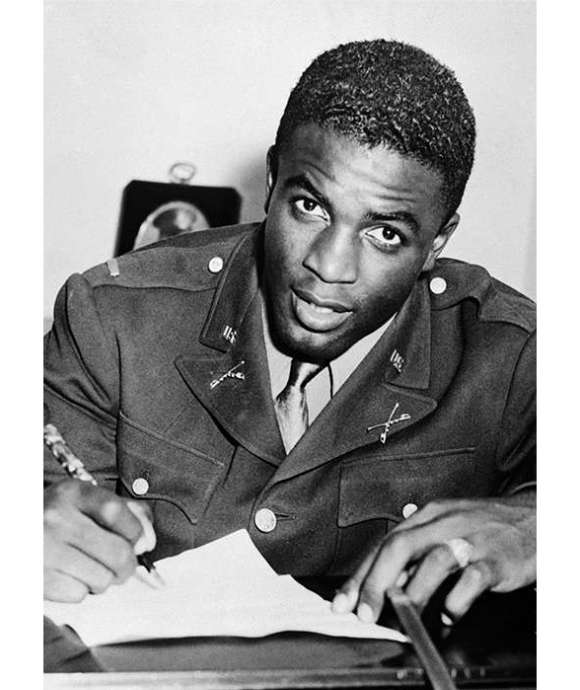
United States v. 2LT Jack R. Robinson
Jackie Robinson is best known for breaking Major League Baseball’s color barrier. Less well known, but just as pivotal, is his 1944 court-martial after refusing to move to the back of a military bus.
Kaylie McCarthy
Kaylie McCarthy holds a master's degree in history from the University of New Orleans, and currently works as the Institute Associate with the Jenny Craig Institute for the Study of War and Democracy.
Cite this article:
MLA Citation:
APA Citation:
Chicago Style Citation:
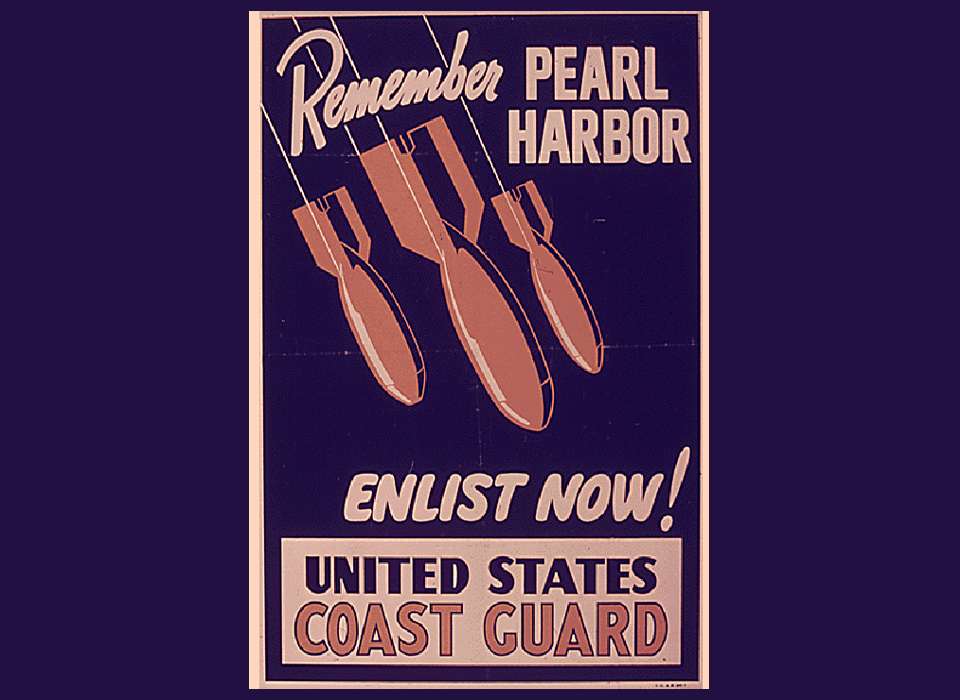
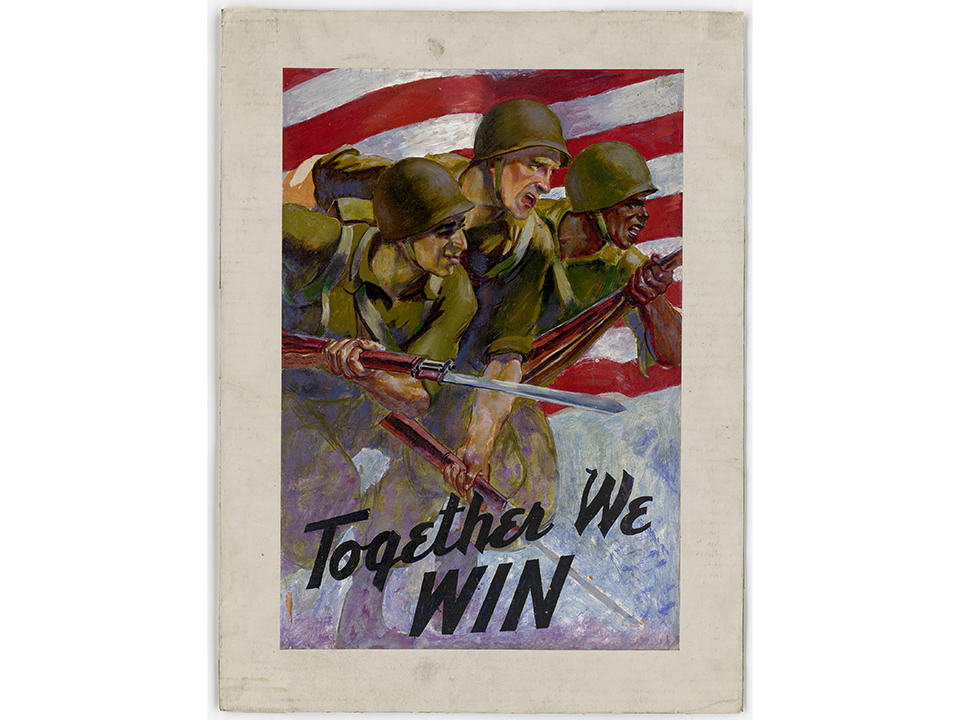
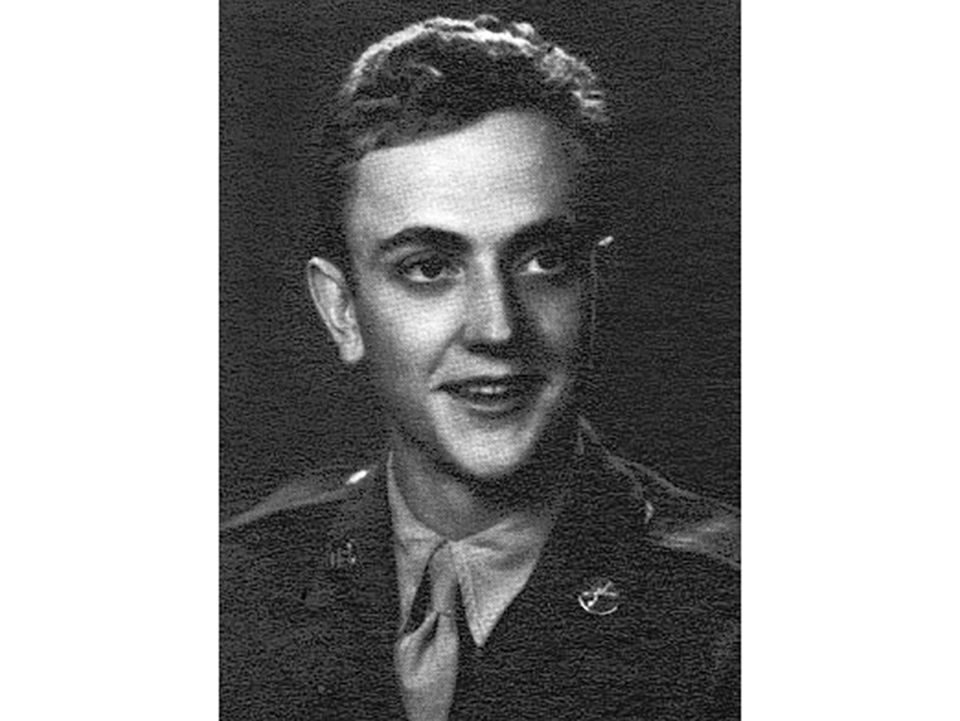
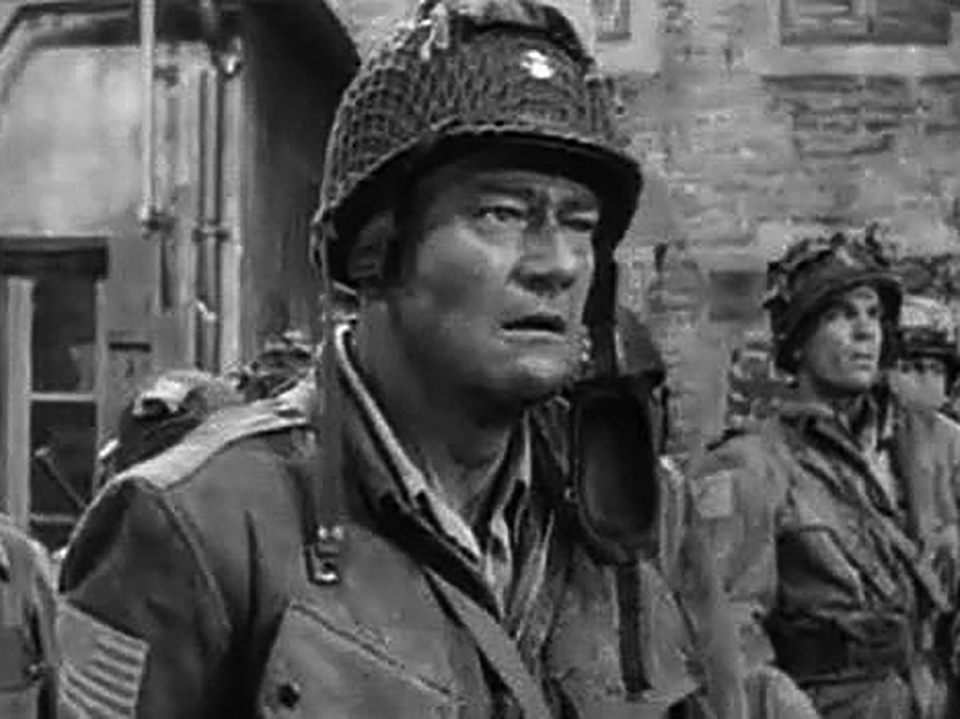
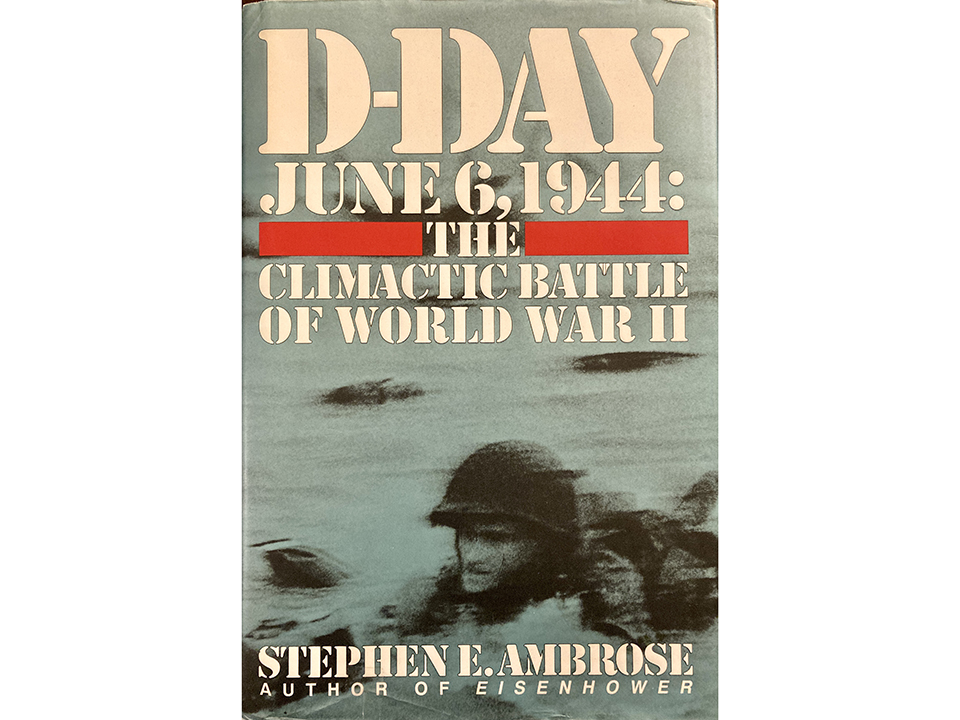






![Max Fuchs, New York City cantor, sings as Rabbi Sydney [sic] Lefkowitz, Richmond, VA, conducts the first Jewish services from Germany.](/sites/default/files/styles/max_650x650/public/2025-10/image1.jpg)


